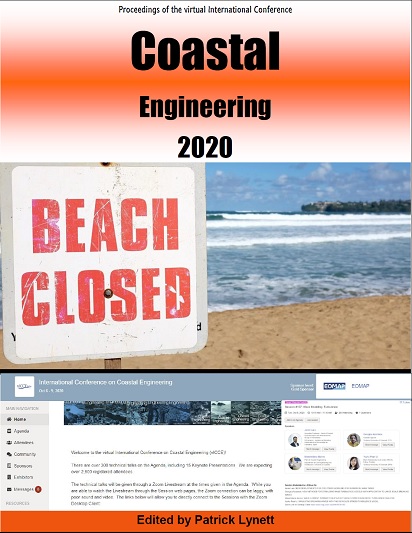Abstract
Driven by wave and current, sediment transport alongshore and cross-shore induces shoreline changes in coasts. Estimated by breaking wave energy flux, longshore sediment transport in littoral zone has been studied for decades. Cross-shore sediment transport can be significant in a gentle-slope beach and a barred coast due to bar migration. Short-term beach profile evolution (typically for a few days or weeks) has been successfully simulated by reconstructing nonlinear wave shape in nearshore zone (e.g. Hsu et al 2006, Fernandez-Mora et al. 2015). However, it is still lack of knowledge on the relationship between cross-shore sediment transport and long-term shoreline evolution. Based on the methodology of beach profile evolution modeling, a semi-empirical closure model is developed for estimating phase-average net cross-shore sediment transport rate induced by waves, currents, and gravity. This model has been implemented into GenCade, the USACE shoreline evolution model.References
Abreu, T., et al. (2010). Coastal Eng., 57(7), 656-667.
Fernández-Mora, A., et al. (2015). Geophys. Res. Lett., 42, 2869–2877, doi:10.1002/2014GL063004.
Frey, A.E et al. (2012) GenCade version 1 Model theory and user’s guide. USACE, ERDC/CHL TR-12-25, 169 pp.
Hsu, T.J., et al. (2006), Coastal Eng., 53, 817-824.
Ruessink, B. G., et al. (2012). Coastal Eng., 65(7), 56-63.
Authors retain copyright and grant the Proceedings right of first publication with the work simultaneously licensed under a Creative Commons Attribution License that allows others to share the work with an acknowledgement of the work's authorship and initial publication in this Proceedings.

